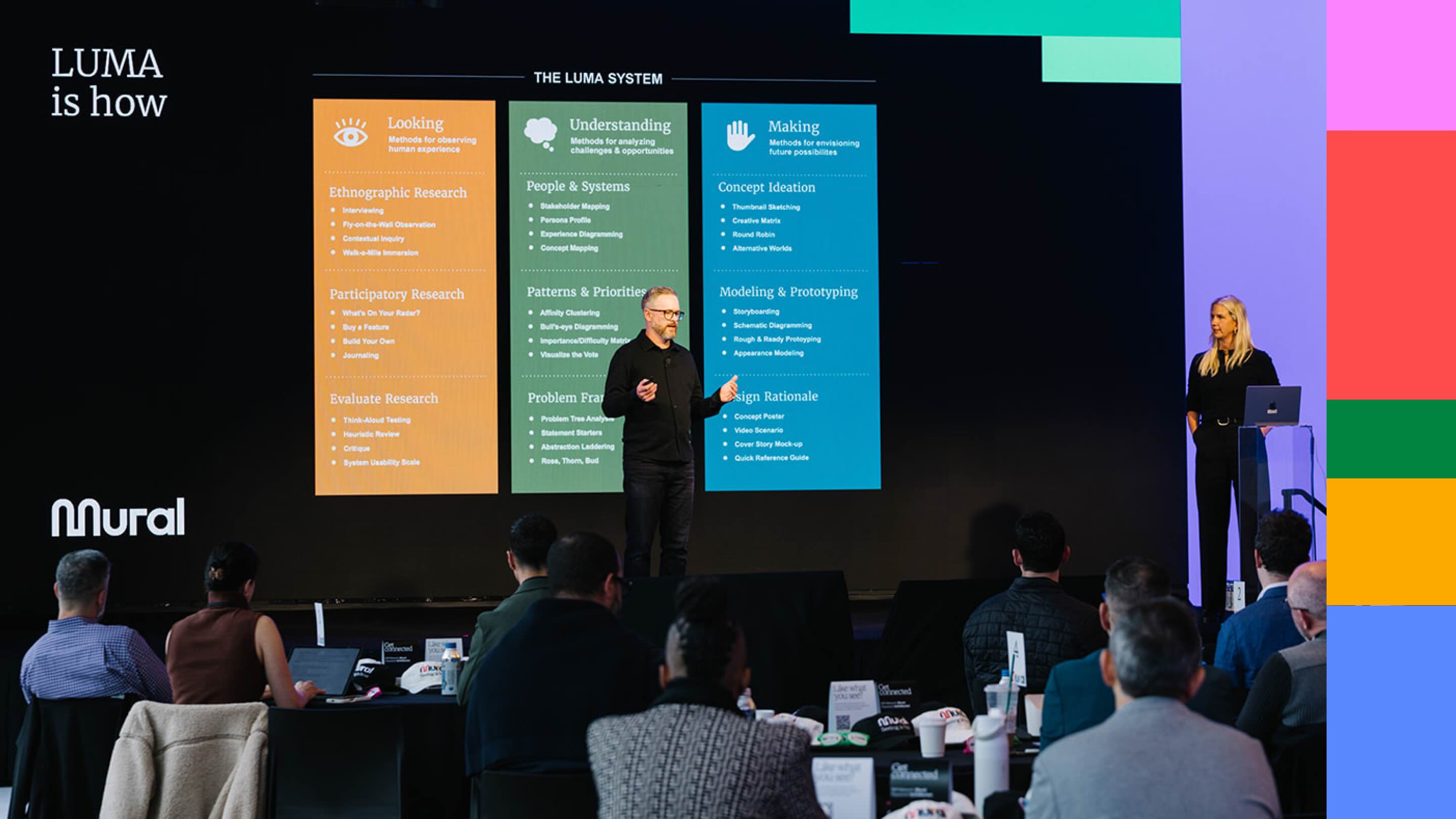How to identify bad meetings so you can fix them
Most meetings suck. This has become the norm, a secret society that we all adhere to and suffer from together.
But what if meetings weren’t a complete drag? What if you looked forward to your meeting time as a chance to follow-up on important initiatives, brainstorm new ideas, identify action items and check-in with your colleagues
We’re here to tell you it’s possible. We need to set higher standards to have more effective meetings that are a source of inspiration for your work instead of a blocker or waste of focus time.
In part one of this Effective Meetings Series we will teach you how to set clear action items, follow-up on important work in a timely manner, and brainstorm with your team members in a way that allows all members of the group to shine.
Let’s dive in.
Why are most meetings so ineffective?
It comes down to an issue of structure. Bad meetings can either suffer from a lack or an overdose of structure. When meetings have too little structure, there is no real leadership and little to no direction. Conversely, too much structure can make a meeting top-heavy and one-directional.
You have to strike a balance. We need meaningful guided structure to experience productive and participatory group collaboration and the amount of structure has to be “just right.” Just how much structure is that? The following 9 barriers to effective meetings illustrate how much structure is needed — and how to strike the right balance.
9 common causes for bad meetings
1. Unclear objective and/or action items
By definition, pointless meetings have no clear purpose. No doubt you can recall attending a meeting that was nothing more than a time-suck. Nothing was accomplished, you left more confused and/or frustrated than before the meeting started, and there was no tangible outcome to show for it.
These kinds of meetings often look like talking in circles with no real decisions made, talking about what needs to be done instead of doing the work itself, and/or discussing multiple, unrelated topics without offering any real solutions. In the most egregious cases, you find you’re in a “zombie meeting” — you know, those recurring calendar invites that bring everyone together, yet their purpose has long been forgotten.

When we gather only to spin our wheels, it’s because we don’t have a defined goal to work toward. We can’t get anywhere if we don’t know our destination. The answer: You must have a clear purpose to call a meeting, period. Establish a concrete outcome or a desired goal(s) you wish to accomplish. Then, and only then, do you have a reason to bring your team together.
2. Missing or inadequate agenda
A meeting is only as strong as its agenda. An effective meeting agenda is the roadmap that leads you to your destination. It sets clear expectations for what you want to accomplish during the meeting and provides an outline of what will be discussed, in what order, and for how long. This structure increases team engagement and productivity.

Prepare each agenda with the overall outcomes in mind. Choose discussion topics that support the identified purpose, and omit anything that doesn’t contribute to your goal(s). Allocate the amount of time needed to tackle each topic and schedule in any necessary breaks. Also, set aside time to debrief at the end of the meeting to follow-up what was discussed and communicate post-meeting next steps. Finalize the agenda by selecting a start and end time, and stick to the schedule to achieve the best results.
🚀 PRO TIP: The ideal meeting length for maximum engagement and productivity is no longer than 60 minutes. In fact, research shows it’s less than 20 minutes. Make your meetings as concise as possible.
3. An inability to brainstorm as a group
“A prototype is a question embodied.” — Diego Rodriguez Telechea
Instead of meeting to discuss the work you need to do, use the time to actually do the work in the meeting together. Bring a tangible prototype or idea to each meeting — something to flesh out, explore, and work on as a team. A prototype can be a storyboard, sample pitch of an idea, coding, or a written brief. Create a workable embodiment of your idea or the problem that needs to be discussed, then use the meeting time to work on and react to it.
💬 PSSST! Wondering how you can share ideas with your team? Stay tuned for our next post as we dive into the importance of visualization and how to brainstorm as a group.

When we treat meetings as group work sessions — tapping into the creative problem-solving efforts of your entire team — we bring the spirit of innovation to do truly meaningful work together.
Talk is cheap — action ensures results. Make the most of group collaboration by bringing collaborative work into the meeting.
4. Low team member engagement
We all know the awkward sound of crickets and the feeling of stale air — even over a video call. There are few things more stifling to team creativity than attending a meeting that’s not interactive and engaging. Being part of a conversation is far more enjoyable and productive than being lectured in a one-sided exchange.

More heads truly are better than one. That’s the power of collaborative intelligence — connecting teams to unlock their collective genius. That’s why we have meetings, after all — to collaborate with others and find creative solutions.
Diverse perspectives bring the best results. But a lack of engagement in meetings prohibits ideas from being heard. To avoid this common meeting problem, offer a collaborative, psychologically safe environment for attendees where everyone feels comfortable to voice concerns, insights, and opinions.
A good way to kick off instant engagement in a meeting is to start with a warm up or icebreaker. These fun games help remind everyone on the call that we’re all human and reestablish a shared purpose.
Let people know you want their input and hold space for it. At the same time, monitor engagement. Prevent over-sharers from stealing the show and encourage under-sharers to be an active part of the conversation.
5. An inability to address problems or miscommunication directly
If there is a problem — whether it be among team members or within the company at large — address it. Face problems head-on. The tension will fester and boil over if you don’t. That kind of environment is one of the worst barriers to effective meetings.
Approach issues with structure and strategy. Start with common ground and areas of agreement among the group to define the problem. Then, hold space for everyone to voice their concerns and objectively listen to understand. Open and honest communication is key to conflict resolution.

There is also a shadow side of communication that’s important to consider. An often overlooked and noteworthy aspect of effective communication is looking for the “negative space,” or anything that is not being said. There might be an important topic or issue that’s being left unaddressed. There might be someone who’s not speaking up that you need to hear from. Don’t let anything of use be left unsaid.
It’s crucial to create a safe and collaborative environment for every meeting to get the most out of them. What kind of atmosphere would you want to be a part of? What do you need to feel seen and heard? Offer that to attendees in every meeting. One heuristic to apply: Create the environment you would want to be in as an attendee. You might call this the Golden Rule of meetings.
🙋🏽♀️ Want to host more inclusive meetings? Check out this guide on improving inclusivity in the workplace.
6. Wrong team members in attendance
Have you ever found yourself in a meeting only to wonder why you were there at all? A major pitfall of meetings is inviting the wrong people to them. The more isn’t necessarily the merrier; inclusivity doesn’t always mean productivity. Meetings are leaner and more focused when you only invite the people who need to be there.

Choose the specific people who will provide value and insight instead of habitually sending out a mass invite. This is an honest strategy, not an act of exclusion. Lean meetings move quicker and are more inclusive by design. You respect people’s time by being choosy. If someone cannot meaningfully contribute to the meeting, they don’t need to be there.
Try using the responsibility assignment (RACI) matrix to help you identify who should attend a meeting:
- Responsible: Who should perform this activity or do the work?
- Accountability: Who is primarily accountable and has the power to vote yes or no?
- Consulted: Who needs to provide feedback and contribute to the project or activity?
- Informed: Who needs to know of the decision or action decided upon?
7. Hierarchies
Power struggles and unclear roles create unnecessary blocks in meeting flow. What do you need for the meeting to function well, and who should fill those roles? Every task needs someone to spearhead it for smooth sailing. Establish clear roles within the meeting by designating a facilitator, moderator, scribe, and any other position you need to keep the meeting organized and constructive.

Hire an outside facilitator for help when making big decisions. A third-party leader who is removed from emotion and office politics is an extremely helpful asset when you’re solving difficult problems. A skilled facilitator will provide a fresh perspective that is unbiased and objective.
8. One-directional communication
As previously mentioned, effective meetings are best as collaborative work sessions. One person talking at a group is far less fertile than an active conversation around shared action items, or a collaborative brainstorming session. It’s critical that each attendee is an engaged participant and takes ownership of their role. When the lead in charge completely runs the show (or a dominant voice controls the room), there is little or no room to hear others’ ideas. You need to hear each perspective to achieve the best results.

Remind the group that you want to hear from them; you need their contributions, equally. Then, give people space to participate and collaborate.
🚀 PRO TIP: Use the acronym “WAIT” (Why Am I Talking?) to evaluate your own contribution to conversation. Do you have something of value to contribute? If not, it may be more valuable not to speak!
9. Poor meeting documentation
Just like how a clear agenda and action items serve as a roadmap for an effective meeting, meeting notes are the script for follow-up. How will you implement the decisions made or information obtained from the meeting? Documenting the meeting in real time is essential for execution later. Meeting notes are important for debriefing, keeping the momentum going post-meeting, and aligning team members.

The key is to not just dump a 60-minute transcript. Note taking isn't productive unless it clearly outlines any important decision-making, follow-up, or actions items that need to be addressed. Visual collaboration, can help you create effective meeting notes that aren't just transcriptions but rather illustrative guides to what work has been done, what needs to be addressed, and what your goals are.
How do you avoid ineffective meetings? Replace them with a smarter strategy.
Do you keep running into one (or more) of these nine common meeting problems? Creating more productive and effective meetings can take practice — but the right tools can help. Learning how to take advantage of asynchronous collaboration can be one of the most powerful strategies for getting rid of ineffective meetings and increasing employee engagement.
✨ To help you start improving your meetings right away, we’ve created a comprehensive async guide so you can be intentional about how your team collaborates. ✨













